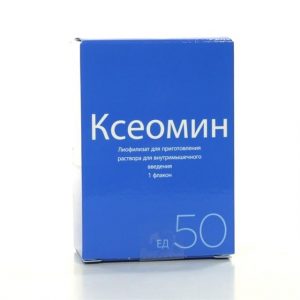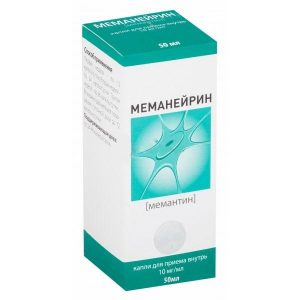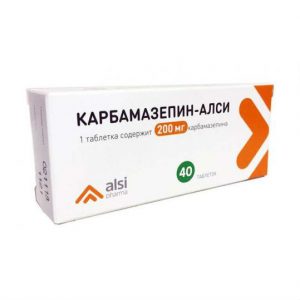Description
Latin name
ZONEGRAN
Release form
Capsules size 1, with a red cap and a white case, with black ink printed on the company logo and the name of the drug with a digital dosage indication ZONEGRAN 100, the contents of the capsules are white and yellowish-white powder, free from visible inclusions .
packaging 56 pcs
¤ °Ñ ¼ ° º ¾ » ¾ ³ ¸Ñ Ñ º ¾ ´ ¹ÑÑ ² ¸
¾ ½ ³Ñ ° ½ – ¿Ñ ¾Ñ ¸ ² ¾Ñ ¿ ¸ » ¿Ñ ¸Ñ Ñ º ¾ .
Indications
Monotherapy in patients with partial epileptic seizures with or without secondary generalization, with first diagnosed epilepsy as part of adjunctive therapy in adults, adolescents and children from 6 years old with partial seizures with or without secondary generalization.
Contraindications
hypersensitivity to the active substance, for any of the excipients or to
sulfonamides, patients with severe hepatic insufficiency (there are insufficient data on the safety and efficacy of the drug for this category of patients)
pregnancy and the period of breastfeeding (there are insufficient data on the safety of the drug for this category of patients (see ” pregnancy and lactation )
children under 6 years of age (data on the safety and effectiveness of the drug for this category of patients are insufficient).
is simultaneously used in children with carbonic anhydrase inhibitors such as topiramate and acetazolamide.
Caution
elderly patients (care must be taken when prescribing the drug due to the limited experience of
patients with renal failure (due to limited clinical experience, it may be necessary to select a slower dose of the drug – see Dosage and Administration )
patients with a high risk of developing nephrolithiasis (see “Special Instructions”)
patients with mild to moderate hepatic insufficiency (due to limited clinical experience, may sweat rely on a slower selection of the dose of the drug – see “Dosage and Administration”)
simultaneous use in adults with carbonic anhydrase inhibitors such as topiramate and acetazolamide (insufficient data, to exclude pharmacodynamic interaction)
simultaneous use in adults with pyrogenic drugs, including carbonic anhydrase inhibitors and drugs with the anticholinergic effect of
, start treatment, cancel it or change the dose of zonisamide while using P-glycoprotein substrates (for example, digoxin, quinidine patients) srdl body weight
Special instructions
Skin rashes
The development of severe skin reactions, including Stevens-Johnson syndrome and toxic epidermal necrolysis, have been reported with therapy with Zonegran ®.
Recommended withdrawal of Zonegran ® in patients who have skin rashes and which cannot be explained by other reasons. All patients with skin rashes while taking Zonegran ® should be closely monitored. especially patients with the simultaneous appointment of other antiepileptic drugs, which themselves are capable of causing skin rashes.
Cancellation syndrome
Zonegran ® is discontinued by gradually lowering the dose to avoid the occurrence of epileptic seizures. There is insufficient data on the cancellation of simultaneously used antiepileptic drugs after achieving control over seizures when using Zonegran ® as part of adjuvant therapy to switch to monotherapy with Zonegran ®. Therefore, the abolition of concomitant antiepileptic treatment should be carried out with caution.
Reactions associated with the presence of a sulfonamide group
Zonegran ® contains a sulfonamide group. Serious adverse reactions from the immune system associated with taking the drugs, which contain a sulfonamide group include the appearance of a skin rash and other allergic reactions, as well as the development of severe hematological disorders, including aplastic anemia, in very rare cases, leading to death.
The development of cases of agranulocytosis, thrombocytopenia, leukopenia, aplastic anemia, pancytopenia and leukocytosis has been reported. Information to assess the possible relationship of these phenomena with the size of the dose of Zonegran ® and the duration of treatment is not enough.
Suicidal ideation and behavior
The development of suicidal ideation and behavior is possible in patients taking antiepileptic drugs according to several indications. A meta-analysis of randomized, placebo-controlled trials of antiepileptic drugs also showed an increased risk of suicidal thoughts and behavior.
The mechanism of this phenomenon is unknown, the available data do not exclude the possibility of an increased risk of suicidal behavior and while taking Zonegran ®.
Patients should be monitored for suicidal thoughts and behavior, and appropriate treatment should be considered. Patients (and those caring for them) should be advised to seek medical help if suicidal thoughts and behavior appear.
Nephrolithiasis
Some patients, especially those with a predisposition to nephrolithiasis, may have an increased risk of kidney stones and signs and symptoms like renal colic, pain in the kidneys or pain in the side.
Nephrolithiasis can lead to chronic kidney damage. Risk factors for nephrolithiasis include previous kidney stone formation, as well as nephrolithiasis and hypercalciuria in a family history. None of these risk factors is a reliable sign to predict the formation of kidney stones during treatment with zonisamide. In addition, the risk may be increased in patients taking other drugs that provoke the development of urolithiasis. Increased fluid intake and forced diuresis helps reduce the risk of stone formation, including and in patients with a predisposition to this.
Metabolic acidosis
The formation of hyperchloremic metabolic acidosis without anionic rupture (a decrease in the level of bicarbonates in the absence of chronic gas alkalosis) is associated with therapy with Zonegran ®. The development of metabolic acidosis is due to the loss of bicarbonates in the kidneys due to the inhibitory effect of zonisamide on carbonic anhydrase, and is possible at any stage of treatment, although it is more often observed in the early stages of treatment. Similar violations were noted both during the placebo-controlled clinical trials and in the post-marketing period. The decrease in the level of bicarbonates is usually not very pronounced (the average value is about 3.5 mEq / L with a daily dose of 300 mg in adults), in rare cases, a more significant decrease can be observed in patients. Conditions or treatments predisposing to the development of acidosis (for example, kidney disease, severe respiratory disorders, status epilepticus, diarrhea, surgical interventions, a diet that promotes the formation of ketone bodies, a number of drugs) can enhance the effect of zonisamide on the level of bicarbonates.
The risk and severity of metabolic acidosis are increased in young patients. In case of signs or symptoms of metabolic acidosis, it is recommended to evaluate the content of bicarbonates in serum. If the developed metabolic acidosis does not go away, you should consider the possibility of reducing the dose or completely stopping the use of Zonegran ® (with a gradual decrease in dose), because development of osteopenia is possible. If a decision is made to continue therapy with persistent acidosis, the use of alkaloids should be considered.
Caution should be exercised when administered concurrently with carbonic anhydrase inhibitors (e.g., topiramate and acetazolamide), as insufficient data to exclude pharmacodynamic interaction (see. ² ÑInteraction ² Ñ).
Heat stroke
Cases of decreased sweating and fever have been reported mainly in patients under 18 years of age. In some cases, heat stroke occurred that required inpatient treatment. Most cases occurred in high ambient temperatures. Patients and / or carers should be warned of the need to maintain adequate hydration and avoid exposure to elevated temperatures. Caution must be exercised when prescribing Zonegran ® at the same time as the drugs contributing to overheating of the body, including carbonic anhydrase inhibitors and anticholinergics.
Pancreatitis
When patients develop signs of pancreatitis while taking Zonegran ®, monitoring of the level of pancreatic lipases and amylase is necessary. In the case of confirmed pancreatitis in the absence of other obvious reasons, it is recommended to cancel the Zonegran ® preparation and prescribe the appropriate treatment.
Rhabdomyolysis
When patients taking Zonegran ® develop severe muscle pain and / or weakness, especially with fever, an assessment of the markers of muscle damage, including levels of CPK and aldolase, is required. If they increase, in the absence of other obvious reasons, such as trauma or a major epileptic seizure, it is recommended to cancel Zonegran ® and prescribe the appropriate treatment.
Women with preserved reproductive potential
Women with preserved reproductive potential should use reliable methods of contraception during treatment with Zonegran ® and within 1 month after its cancellation (see ² ÑUse during pregnancy and lactation ² Ñ).
Decrease in body weight
Zonegran ® can cause a decrease in body weight, therefore, during the treatment of patients with reduced body weight or when it is reduced, it is necessary to prescribe food additives and enhanced nutrition. With a pronounced decrease in body weight, the possibility of discontinuing the Zonegran ® preparation should be considered. Weight loss in children can be more pronounced.
Pediatric Patients
The above precautions apply to children and adolescents. The following are safety precautions that should be taken into account.
Heat stroke and dehydration
Prevention of overheating and dehydration in children. Zonegran ® can cause a decrease in perspiration and lead to overheating, and in the absence of appropriate assistance in a child, brain damage and death can occur. Children are at high risk, especially in hot weather.
If a child is taking Zonegran ®: overheating should be avoided, especially in hot weather significant physical activity should be avoided, especially in hot weather water intake should not be used, the following drugs should not be used: carbonic anhydrase inhibitors (such as topiramate and acetazolamide) and anticholinergics (such like clomipramine, hydroxyzine, diphenhydramine, haloperidol, imipramine and oxybutynin).
If any of the following symptoms occur, you should immediately seek medical help: a feeling of intense heat from the skin with slight sweating or in its absence, or if the child develops confusion, muscle cramps, or if the child ² ¢s heartbeat or breathing increases. It is necessary to place the baby in a cool, shaded place, moisten the baby ² ¢s skin with water to cool it, give the baby drink cool water.
Cases of decreased sweating and fever have been reported, mainly in children. In some cases, heat stroke occurred that required hospitalization. In some cases, fatal shock was reported. In most cases, the phenomenon occurred during warm weather. The patient and their carers should be warned about the possible severity of heat stroke, situations where it may occur, as well as measures to be taken in case of any signs or symptoms. Patients or carers should be warned about the need to consume a sufficient volume of fluid and avoid excessive physical exertion, depending on the condition of the patient. In case of signs and symptoms of dehydration, oligohydrosis or fever, you should consider canceling the drug Zonegran ®.
The drug Zonegran ® should not be used in children who are simultaneously receiving other drugs, the use of which makes patients susceptible to the appearance of disorders associated with excessive heat, such as carbonic anhydrase inhibitors and drugs with anticholinergic effects.
Weight loss
Cases of weight loss have been described that have led to a deterioration in the general condition and cessation of the use of an antiepileptic drug, leading to death. The use of Zonegran ® is not recommended in children with reduced body weight or in children with poor appetite.
The frequency of weight loss is the same in different age groups, however, given the possible seriousness of weight loss in children, it is necessary to control body weight in this group of patients. If the patient ² ¢s weight gain is delayed, based on the physical development charts, it is recommended to revise the diet or increase the amount of food taken, otherwise you should stop using Zonegran ®.
Clinical studies have limited evidence in patients weighing less than 20 kg. In this regard, in the treatment of children aged 6 years and older with a body weight of less than 20 kg, caution should be exercised. The effect of long-term maintenance of low body weight on growth and development in children is unknown.
Metabolic acidosis
The risk of acidosis associated with the use of zonisamide in children and adolescents may be higher and more severe. In this group of patients, appropriate monitoring and control of serum bicarbonate levels is necessary. The long-term effects of low bicarbonate levels on growth and development are unknown.
Zonegran ® should not be used in children at the same time as other carbonic anhydrase inhibitors such as topiramate or acetazolamide.
Nephrolithiasis
Kidney stones have been reported in children. Some patients, especially those with a predisposition to nephrolithiasis, may have an increased risk of kidney stones and related signs and symptoms, such as renal colic, kidney pain, or side pain. Urolithiasis can lead to chronic kidney damage. Risk factors for urolithiasis include previous kidney stone formation and a hereditary predisposition to nephrolithiasis and hypercalciuria. None of these risk factors is a reliable sign to predict the formation of kidney stones during treatment with zonisamide.
Increased fluid intake and forced diuresis may reduce the risk of kidney stones, especially in people with risk factors. An ultrasound examination of the kidneys may be performed at the discretion of the physician. If kidney stones are found, Zonegran ® should be discontinued.
Impaired liver function
In children and adolescents, an increase in liver and bile duct function, such as ALT, AST, GGT, and bilirubin, was observed, but no clear patterns were found for values ² ¹ ² ¹in excess of VGN.
Nevertheless, if there is a suspicion of the occurrence of adverse events from the liver, liver function should be assessed and the question of canceling Zonegran ® should be resolved.
Cognitive function
Cognitive impairment in patients with epilepsy has been linked to underlying disease and / or PEP.
In a placebo-controlled study using zonisamide in children and adolescents, the proportion of patients with impaired cognitive function was quantitatively higher in the zonisamide group compared with the placebo group.
Excipients
Zonegran ® with a dosage of 100 mg contains dyes ² ÑSunny sunset yellow ² Ñ (E110) and ² Ñcharming red ² Ñ (E129), which can cause allergic reactions.
Effect on the ability to drive vehicles and work with mechanisms. Special studies of the effect of the drug on the ability to drive vehicles and work with mechanisms have not been conducted. Zonegran ® can cause (especially at the beginning of therapy or with an increase in dose) drowsiness and difficulty concentrating, and therefore, during treatment, care must be taken when engaging in activities that require an increased concentration of attention and speed of psychomotor reactions.
Composition
1 caps.
zonisamide
100 mg
Excipients: hydrogenated vegetable oil – 3 mg, microcrystalline cellulose – 196.25 mg, sodium lauryl sulfate – 0.75 mg.
Composition of the capsule shell: gelatin – 74.239 mg, titanium dioxide (E171) – 1.613 mg, charming red dye (E129) – 0.147 mg, sunset sunset dye yellow (E110) – 0.002 mg, ink 1014 Techprint SW-9008 * (shellac – 36.0-40.5 mcg, propylene glycol – 4.5-10.5 ?g, potassium hydrochloride – 0.075-0.150 ?g), dye iron oxide black (E172) – 36.0-42.0 ?g).
Dosage and administration
Inside, with water, during meals or regardless of meals. The dose of the drug is selected taking into account the therapeutic effect. As shown by clinical studies, a daily dose of 300-500 mg is effective, although some patients, in particular those who do not take CYP3A4 cytochrome inducing drugs may respond to lower doses.
The initial dose is 50 mg divided into two doses. After one week of taking the daily dose can be increased to 100 mg per day. Then the dose can be increased by 100 mg every 7 days, to the maximum recommended dose of 500 mg per day. Subsequently, during treatment, you can switch to a single dose of the drug every day.
The use of two-week intervals should be considered for patients with hepatic or renal failure, as well as patients not taking drugs that induce CYP3A4 cytochrome.
Side effects
Infectious and parasitic diseases: urogenital infections,
pneumonia From the blood and lymphatic system: leukopenia, thrombocytopenia
Metabolic and nutritional disorders: decreased appetite, hypokalemia
Mental disorders: agitation, depression, insomnia, emotional lability, anxiety, confusion, acute psychosis, aggressiveness, suicidal ideation
From the nervous system: ataxia, dizziness, memory loss, drowsiness, bradyphrenia, impaired attention, paresthesia, nystagmus, speech impairment, tremors, convulsions
From the organ of vision: diplopia
From the respiratory system, chest and mediastinal organs: respiratory failure
From the gastrointestinal tract: constipation, diarrhea, dyspepsia, nausea, vomiting, abdominal pain
From the liver and biliary tract: acute cholecystitis
From the skin and subcutaneous tissues : rash, pruritus, ecchymosis
General disorders and disorders at the injection site: increased fatigue, fever, irritability
Laboratory and instrumental data: decreased bicarbonate, decreased weight, increased CPK, increased ALT, increased AST, impaired urinalysis .
Overdose
Symptoms: there have been cases of intentional and unintentional overdose of Zonegran ® in adults and children. In some cases, an overdose was asymptomatic, especially with immediate gastric lavage. In other cases, an overdose was accompanied by the following symptoms: drowsiness, nausea, gastritis symptoms, nystagmus, myoclonus, coma, bradycardia, impaired renal function, arterial hypotension and respiratory depression. A very high concentration of zonisamide in blood plasma (100, 1 μg / ml) was observed approximately 31 hours after an overdose of Zonegran ® and clonazepam. A patient with an overdose of these drugs developed coma and respiratory depression. However, after 5 days, he regained consciousness, and he had no complications.
Treatment: There is no specific antidote for the treatment of overdose with Zonegran ®. After a suspected overdose, immediate gastric lavage is indicated against the background of conventional measures aimed at maintaining airway patency. Conduct maintenance therapy, including regular monitoring of the main indicators of the state of the body, and careful monitoring. Zonisamide has a long T1 / 2, in connection with which the symptoms of its overdose can be persistent. No overdose treatment studies have been conducted, however, it is known that hemodialysis reduces the concentration of zonisamide in plasma in patients with renal failure and can be considered as a treatment for overdose.
Storage conditions
At a temperature not exceeding 30 ° C.
Expiration
3 years.
holiday conditions from drugstores
prescription
lekarstvennaja form
kapsul
Eisai MANUFACTURING Limited, UK




